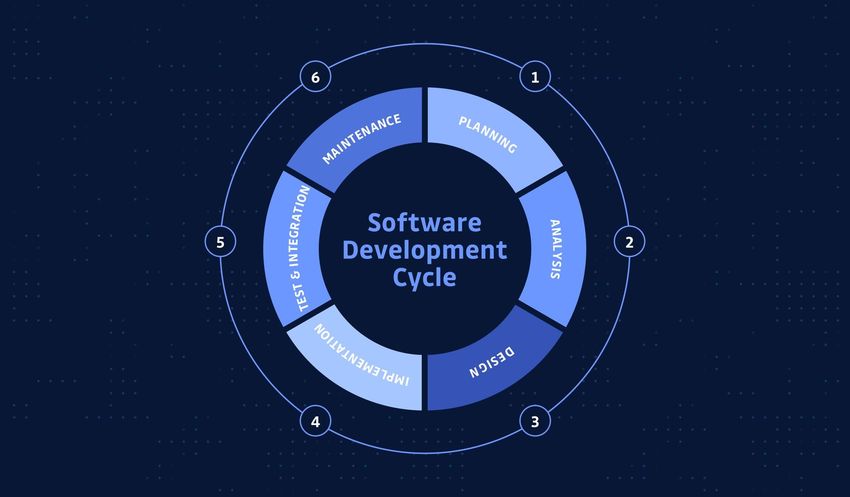Introduction: AI is Transforming Software Development
Machine Learning (ML) is no longer a futuristic concept—it’s shaping the way modern software applications are built. From recommendation engines (like Netflix 🎬) to fraud detection (like PayPal 🔍), ML is becoming an essential part of software systems.
However, integrating ML into a software development lifecycle (SDLC) isn’t as simple as writing a few lines of code. It involves:
✅ Data collection & preprocessing 📊
✅ Model training & evaluation 🎯
✅ Deployment & monitoring 🚀
✅ Continuous learning & improvement 🔄
Let’s explore how to seamlessly integrate ML into your software development process!
1. Understanding the Role of ML in Software Development 🤔
Before diving into integration, it’s crucial to understand where ML fits into your application.
🔹 Where Can You Use ML in Software?
✔ Personalization – Netflix & YouTube recommendations 🎬
✔ Fraud Detection – Banking & payment security 🔒
✔ Image & Voice Recognition – Face unlock & Siri 🎤
✔ Predictive Analytics – Stock market & demand forecasting 📈
✔ Chatbots & NLP – AI-driven customer support 🤖
✔ Automation & Optimization – Smart scheduling & logistics 🚛
💡 Key Question: Does your application need ML, or is a rule-based system enough? ML is ideal for pattern recognition, automation, and decision-making tasks.
2. Preparing for ML Integration: The Data-First Approach 📊
Machine Learning models require high-quality data to perform well. Before integration, focus on:
🔹 Steps in Data Preparation:
✅ Collecting Data – Web scraping, APIs, databases, user interactions
✅ Cleaning & Processing – Handling missing values, duplicates, errors
✅ Feature Engineering – Selecting and transforming relevant features
✅ Splitting Data – Dividing into training, validation, and test sets
Example: Preparing Data for a Movie Recommendation System
python
---
import pandas as pd
# Load dataset
movies = pd.read_csv("movies.csv")
# Handle missing values
movies.fillna("", inplace=True)
# Convert categorical features into numerical (encoding)
movies["genre_encoded"] = movies["genre"].astype("category").cat.codes
print(movies.head())
💡 Pro Tip: More data != better model. Focus on clean, relevant data!
3. Choosing the Right ML Model for Your Software 🧠
Once data is ready, it’s time to select and train a model that suits your application.
🔹 Common ML Models & Their Use Cases:
✔ Linear Regression – Forecasting sales & trends 📉
✔ Decision Trees – Customer segmentation & classification 🌲
✔ Neural Networks – Image & voice recognition 🖼️🎙️
✔ Clustering (K-Means, DBSCAN) – Grouping similar users or products 🎯
✔ NLP Models (BERT, GPT) – Chatbots & text analysis 💬
Example: Building a Simple Sentiment Analysis Model
python --- from sklearn.feature_extraction.text import CountVectorizer from sklearn.naive_bayes import MultinomialNB from sklearn.pipeline import make_pipeline # Sample dataset texts = ["This movie is great!", "I hated the ending", "Fantastic plot!"] labels = [1, 0, 1] # 1 = Positive, 0 = Negative # Train a simple model model = make_pipeline(CountVectorizer(), MultinomialNB()) model.fit(texts, labels) # Predict sentiment print(model.predict(["Amazing acting!"])) # Output: [1]
💡 Tip: Train models using real-world data to ensure accuracy!
4. Model Deployment: Bringing ML to Production 🚀
Training a model is just the start. To integrate it into your software, you must deploy it.
🔹 Deployment Strategies:
✔ Embedded Models – Model runs inside the software (good for mobile apps) 📱
✔ API-Based (Flask, FastAPI) – Model is hosted separately & accessed via API 🌍
✔ Cloud Deployment (AWS, GCP, Azure) – Scalable & efficient ☁️
Example: Deploying a Model as a REST API (Using Flask)
python
---
from flask import Flask, request, jsonify
import pickle
# Load trained model
model = pickle.load(open("sentiment_model.pkl", "rb"))
app = Flask(__name__)
@app.route('/predict', methods=['POST'])
def predict():
text = request.json["text"]
prediction = model.predict([text])
return jsonify({"prediction": int(prediction[0])})
if __name__ == "__main__":
app.run(debug=True)
💡 Now, any software can call this API and get ML-powered predictions!
5. Monitoring & Continuous Learning 🔄
Machine Learning is not a one-time process. Once deployed, models need monitoring, retraining, and updating.
🔹 Key Metrics to Track:
✔ Accuracy & Performance – Is the model making correct predictions?
✔ User Feedback & Drift – Is the data changing over time?
✔ Retraining Needs – Periodically update models with new data
📌 Example: If an e-commerce recommendation system starts suggesting irrelevant products, it’s time to retrain it!
6. Integrating ML into Agile Software Development 🔄
To smoothly integrate ML, adapt Agile methodologies:
🔹 ML in Agile Development:
✔ Sprint 1: Data Collection & Cleaning
✔ Sprint 2: Model Selection & Initial Training
✔ Sprint 3: API Development & Integration
✔ Sprint 4: Testing, Deployment & Monitoring
By breaking ML tasks into manageable iterations, teams can quickly adapt & improve.
7. Tools & Frameworks for ML Integration 🔧
To speed up ML integration, use powerful frameworks:
🔹 ML Libraries & Frameworks:
✔ Scikit-learn – Quick ML models 🏆
✔ TensorFlow / PyTorch – Deep learning frameworks 🤖
✔ Flask / FastAPI – ML model deployment 🌐
✔ MLOps (Kubeflow, MLflow) – Automated model lifecycle management 🚀
💡 Pro Tip: MLOps is essential for handling large-scale AI applications efficiently!
Conclusion: Future-Proofing Your Software with ML 🤖
Machine Learning is revolutionizing software development. By integrating ML effectively, you can build smarter, more adaptive applications.
🚀 Quick Recap:
✅ Step 1: Prepare & Clean Data 📊
✅ Step 2: Train & Select the Right Model 🧠
✅ Step 3: Deploy the Model via API or Embedded Integration 🌐
✅ Step 4: Monitor & Continuously Improve 📈
✅ Step 5: Use MLOps for Scaling 🚀
💡 Next Steps? Start integrating ML into your software TODAY!


